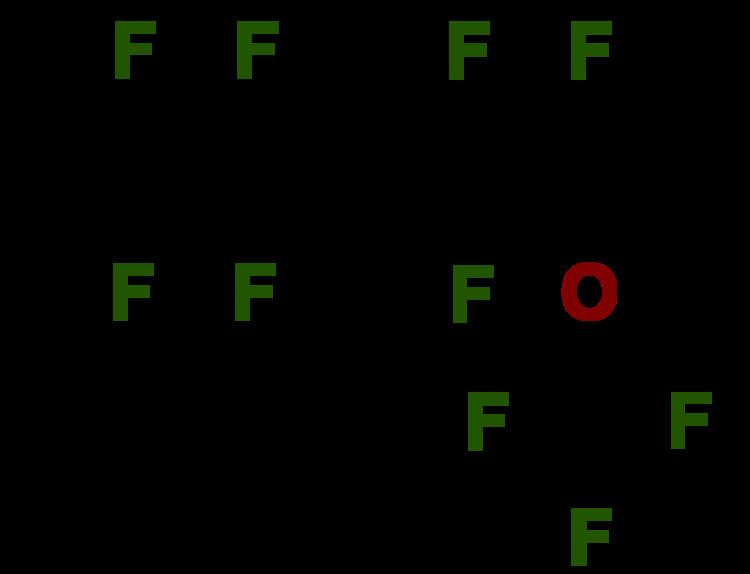 | ||
Perfluoroalkoxy alkanes or PFA are fluoropolymers. They are copolymers of tetrafluoroethylene (C2F4) and perfluoroethers (C2F3ORf, where Rf is a perfluorinated group such as trifluoromethyl (CF3)). In terms of their properties, these polymers are similar to polytetrafluoroethylene (PTFE). The big difference is that the alkoxy substituents allow the polymer to be melt-processed. On a molecular level, PFA has a smaller chain length, and higher chain entanglement than other fluoropolymers. It also contains an oxygen atom at the branches. This results in a material that is more translucent and has improved flow, creep resistance, and thermal stability close to or exceeding PTFE. Similarly advantaged processing properties are found in fluorinated ethylene propylene (FEP), the copolymer of tetrafluoroethylene and hexafluoropropylene.
Applications
PFA is commonly used as material for piping and fittings for aggressive chemicals, as well as corrosion-resistant lining of vessels in the chemical-processing industry. Typical applications are in the construction of gas scrubbers, reactors, containment vessels, and piping. In coal-fired power plants, it is used as lining for heat exchangers. By channeling crude gas through the PFA-lined apparatus the gas stream can be cooled beyond its condensation temperature without damaging the heat exchanger. Its use contributes to increasing the efficiency of the whole plant.
